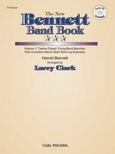Marches – The Key to A Successful Band Program
Marches are an important part of the American concert band literature, but might be one of the most misplayed genres in the band repertoire. Many directors and students feel that marches are both predictable and not exciting to play. This is only true if they are played incorrectly, which comes from a complete lack of understanding of the genre. Marches are some of the richest pieces in all of music literature. There is an abundance of variety of styles, forms and tempos within the march form. Every great composer throughout musical history has written marches as part of their output, including Mozart, Beethoven and of course Sousa. There are as many different types of marches as there are composers who have written them. The composers’ country of heritage has a lot to do with the style of the marches they write, but there is every variation in-between giving bands a wonderful musical palette to chose from.
Bands play marches poorly due to a lack of understanding of this rich musical history. Most American bands approach all marches in the typical American style. This is the wrong approach, for within the many great marches written by American composers there is great diversity. You would never play Sousa the same way you play Fillmore or King. Students can gain as much knowledge about musicianship and solid fundamental playing from performing marches as they can from any other type of music. It is the mindset of the educator that dictates how the students learn from these delightful compositions. If the teacher has a disdain for marches, then that will carry over to the students. If the teacher approaches marches like every other composition with the musical passion that all music deserves, then their band’s performance of marches will improve greatly and the students will share the passion for this music that is due.
Let’s start by selecting the right tempo for a march. Not all marches are played 120 bests per minute. Also, it has been my observation that many directors play marches too fast. In general it seems that the most common tempo a march is played today is around 132 beats per minute. Sousa’a marches for the most part need to be kept in check and in the 120 range. Fillmore on the other hand liked his marches “fast and fun,” but you would not play a 6/8 Fillmore or even a 6/8 Sousa march faster than 120. The most common error that I hear is the playing of a British style march at the tempo of an American style march. A good example of this type of march is British Eighth by Zo Elliot. This march is best performed at a tempo of between 92 and 108 beats per minute. It is more regal this way and following the long tradition of marches in the British style.
One of the worst aspects of march performance today is that students have a tendency to play all of the notes too short and accented notes are played with too much tongue and short. Do marches contain short notes? Absolutely, but these shortest of notes should be reserved for notes that precede an accented note or for notes that are specifically marked with a staccato. This means unmarked notes should be played separated, but not short and certainly not clipped or stopped with the tongue. Accented notes should be played with more weight using air and more length, and not just a harder tongue. Accented notes are given to show emphasis to a note and should be thought of in this manner.
Marches can be delightful musical gems to perform and to listen to or they can be some of the most boring. It’s your choice! Why not make them the rich, vibrate and joyous pieces that they deserve to be and strive to improve the quality of your band in the process!
 –Portions of this blog were taken from the book “The New Bennett Band Book” by Harold Bennett, arranged by Larry Clark
–Portions of this blog were taken from the book “The New Bennett Band Book” by Harold Bennett, arranged by Larry Clark
